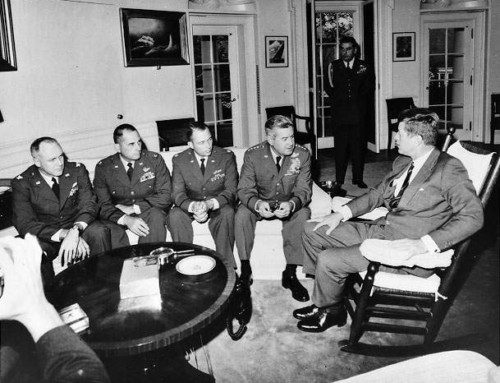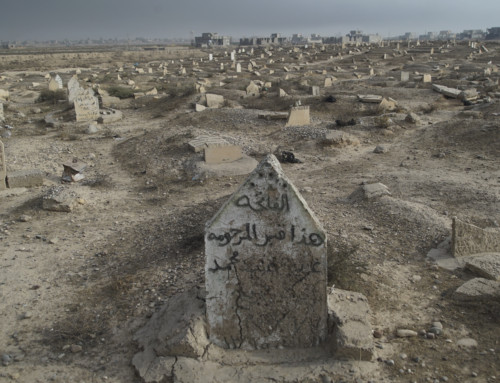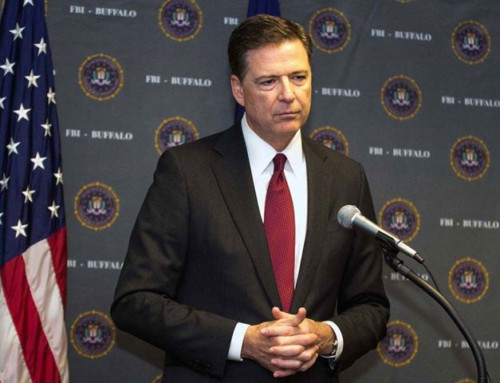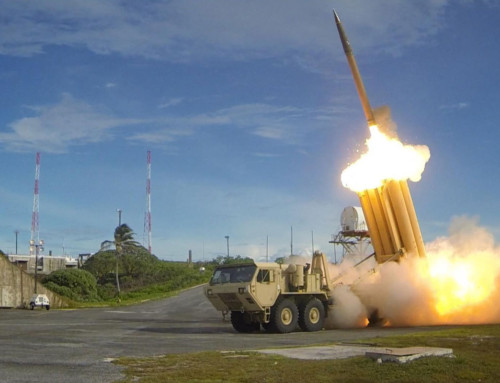By 207 B.C., Rome and its allies on the Italian peninsula had lost approximately 100,000 soldiers to the invading armies of the great Carthaginian general, Hannibal. To make matters more desperate, the Carthaginians were in the final stages of securing massive reinforcements from Phillip V of Macedon. That year the Roman Senate sent a secret group of provocateurs to Northern Greece who started violent insurrections among Phillip’s disaffected subject peoples to his south. The Macedonian armies never sailed and for next 600 years the course of western civilization would be charted by Rome.
Special Forces Will Again Change the World
As I write in Lessons from Fallen Civilizations, “Since the mythical era of Achilles, ascendant civilizations have always produced small cadres of elite warriors. Their prodigious skills and audacity, combined with the element of surprise, have continuously, throughout the history of warfare, produced an astonishing means of martial leverage.”
Over two millennia after the Roman provocateurs destabilized Macedon, in the immediate aftermath of 9/11, President Bush ordered one of the most audacious operations ever attempted in the history of special-forces warfare. By early October, just weeks after the attacks, CIA paramilitary units were lifted out of Uzbekistan into Northern Afghanistan, testing the altitude limits of their helicopters. Their orders were to link up with the beleaguered Afghan Northern Alliance guerillas, a collection of tribes which the CIA supported in exchange for intelligence but who were losing the war to free their country from its foreign Taliban overlords. Like their Roman forbearers, their mission was to befriend, recruit, equip, advise, and lead the Northern Alliance fighters in attacks against Taliban and al Qaeda positions. The Americans were both soldier and diplomat.
Additionally, they were to provide the necessary on-the-ground GPS/laser coordination for precision air strikes. In Doug Stanton’s Horse Soldiers, he describes a battle that saw the first American cavalry charge since the 19th century. “Ahead our horsemen charged the middle of the line about 600 yards ahead. The men on foot trotted behind. Nelson looked up just as the Taliban line exploded. Next another bomb from the jet overhead smashed one of the tanks…Up ahead, Nelson could see the Taliban line breaking in places, here and there like a sand wall crumbling.”
By December 7, 2001, only two months later, the Taliban had abandoned Kabul, all of Kandahar province and were attempting to hold on to their mountain redoubt in Tora Bora. The war to defeat al Qaeda in Afghanistan was essentially over.
The combination of ancient specialized guerilla tactics combined with high-tech laser guided air attacks are already once again at work in the war against ISIS in northern Iraq. This week Kurdish Peshmerga fighters, the PKK (a Kurdish separatist group designated by the U.S. as terrorist organization) and U.S. f-18 and f-16 jets have combined to win several victories after an unbroken series of defeats and a massive loss of territory to the terror army, ISIS.
The new unlikely allies opened a corridor on mount Sinjar, allowing the trapped Yazidi families there to escape and averted a humanitarian catastrophe. They captured some small towns to the west of Erbil, giving the capital of Iraqi Kurdistan a lager buffer zone of protection from ISIS weaponry. And most importantly, they retook the Mosul Damn. Assuming the allies can hold the damn; this first victory by the allies was of critical strategic importance because it provides most of the electricity to Iraq. The allies’ fear was that even if ISIS could eventually be driven out of the country and back into Syria, on their way out, they could blow up the damn, sending a 6o-foot wall of water down the Tigris Valley, destroying whole cities and towns, inundating Bagdad, and turning the lights out over most of the country. The damn needed to be retaken immediately.
Remembering James Foley
ISIS retaliated by publicly beheading American journalist, James Foley. For ISIS, which by some estimates has ballooned into an army of up to 80,000, this was both its first terrorist attack against the U.S. and a declaration of war.
War Accelerates History
It was for maximum effect that the ISIS executioner of James Foley spoke on film to the world in a perfect English accent. The message was clear—if the U.S. does not stop the bombing, we have English-speaking Muslims who will be coming to kill you. As the military historian, Victor Davis Hansen, has observed, major conflicts always have the effect of greatly accelerating historic events. And in this regard, the brutal invasion and ethnic cleansing by ISIS presents the U.S. and its western allies with a chance to press the “reset button” in the Middle East after six-years of a disastrous capitulationist foreign policy. Rather than fighting to a draw and then leaving, the ISIS invasion presents the U.S. with a chance to chart a positive course toward actually winning the on-going war between the West and resurgent militant Islam. One important key to victory will be forging a close alliance with the Kurds. The Kurdish diaspora forms a vast arc of lands stretching from Eastern Turkey, Eastern Syria, Northern Iraq, and most importantly, Northwestern Iran.
Within this region there are an estimated 40 million Kurds. They are one of the world’s largest stateless groups. If the U.S. were to become not just their partner in the destruction of ISIS but also their champion in securing a sovereign homeland, it would have the potential to change the Middle Eastern chess board in the favor of the West and its Arab allies.
Although Obama has had to reiterate his campaign pledge to never put boots back on the ground in Iraq, we can be assured that are not just hundreds but probably several thousand American “advisors” already in Iraqi Kurdistan training, overseeing weapons shipments and directing laser-guided air strikes.
To destroy ISIS, in addition to airpower, it seems likely that the U.S. will ultimately require, at the least, 10 to 20 thousand soldiers and Special Forces personnel to partner with Iraqi, Kurdish and Free-Syrian soldiers. Ironically this was the number of soldiers that Obama’s military advisors had told him was the bare minimum we needed to remain in Iraq in order to maintain the peace George Bush had left him. But when Obama only offered 2 to 3,000 advisory personnel, Maliki told him to pound sand and decided to go to with the Iranians who would offer him a better personal security arrangement.
The huge loss of life in this new round of fighting in Iraq is the direct result of Obama’s abysmally flawed politicized war planning. But Obama’s place in history is his problem. Early in the Bush administration America proved that the combination of highly skilled clandestine Special Forces combined with determined indigenous people fighting for their homeland can be very decisive. We have no choice but to act decisively again. We simply need a president with the will to lead and win.
Part III – Read why an independent Kurdistan can become a strategic ally and how it can allow us to destabilize our single greatest enemy—Iran.






